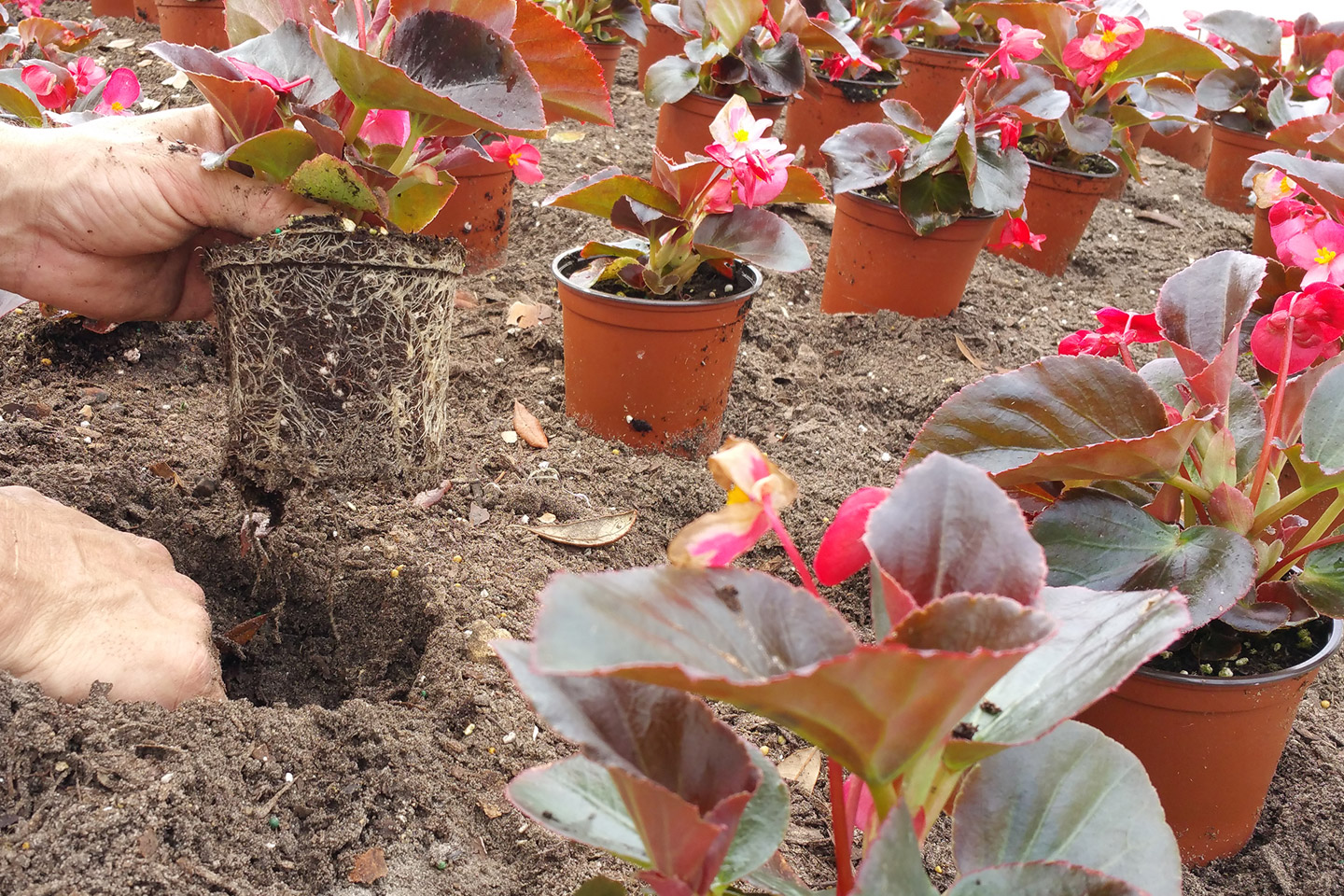Florida's Invasive Plants - Sit Down with CEPRA
We can encounter plant species that do not belong amongst coastlines, fields, forests, and roadways. The US Department of Interior Bureau of Land Management defines noxious weeds as any plant designated by the government as harmful to agriculture, property, public health, or wildlife. These non-native plants invade new territory and out compete and eliminate our native plants. We call these unwanted plants "INVASIVE."
People are mostly to blame for the spreading of invasive plant species. We import plants from all over the world and plant them here in Florida, usually because we think that there will be some benefit from the plant or maybe that the plant is just pretty. Typically, most of these plants are unable to adapt to Florida's environmental conditions and just die off. While some of these new plants survive and stay put right where they were planted, others thrive in Florida's growing conditions, go to seed, and spread rapidly.
Non-native invasive plant species destroy natural ecosystems by displacing native plant species and out competing with them for sun and nutrients. Some invasive plants also carry plant diseases that affect our vegetable farming industry, causing the decline and death of eggplant, peppers, and tomatoes.
The Florida Department of Agriculture and Consumer Services estimates that the eradication of invasive plants cost Florida taxpayers over $30 million dollars a year. Florida struggles with more non-native plants than any other part of the country largely due to Florida's subtropical climate, which provides the invasive species with a longer growth period than most other parts of the country.
Here are some examples of some of the most frequently encountered invasive plants that can be found in our great state of Florida.
Kudzu
Kudzu is a semi-wooded perennial vine. Mature plants produce small purple or red flowers that are very fragrant. It prefers roadsides, disturbed areas, and abandoned fields. This vine has taken over acres and acres of land in Florida and in other southern states. Kudzu smothers everything it climbs and blocks native plants from receiving adequate sunlight. The Kudzu vine can grow up to 12 inches a day and the vine can climb at least 100 feet high while strongly clinging tightly to its captive host.
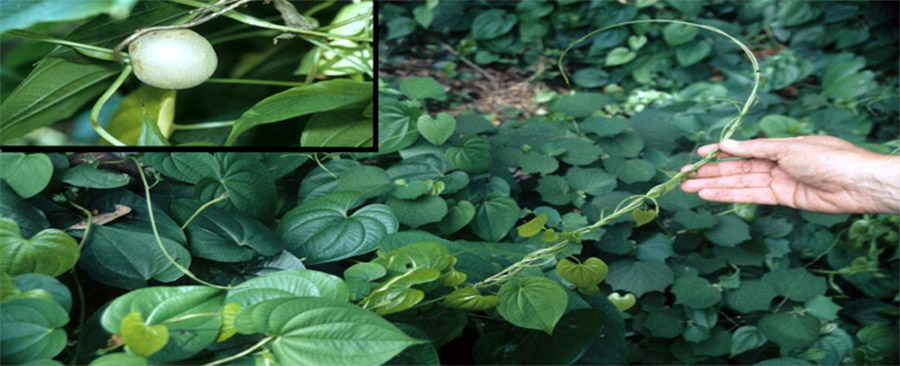
Tropical Soda Apple
Tropical Soda Apple is an upright leafy perennial shrub that produces white flowers and a small round fruit. The fruit resembles tiny green watermelons and matures to a yellow color. This invasive weed prefers fields, pastures, citrus groves, ditches, and roadsides. When found in livestock pastures the cattle will eat this plant's fruit and spread it through their stool. This is such a concern that some states require a quarantine period of cattle before traveling from areas of infestation. Its mature height ranges from 3-6 feet tall and can take over a native habitat within a year or two.
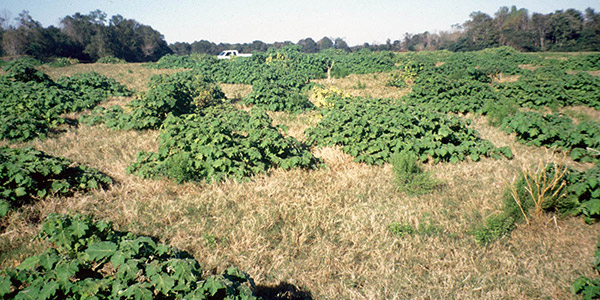

Brazilian Pepper
Brazilian Pepper arrived in Florida back in the 1800's because people thought its berries were attractive. The red berries and green leaves reminded Floridians of Christmas Holly shrubs. The Brazilian Pepper is now considered one of the most invasive plant species in the state. It can be found in open areas with damp soil and coastal wetlands, where it grows next to the water and crowds out Mangroves and other native plants. The Brazilian Pepper is a large sprawling shrub or small tree with a thick canopy. The mature height can range from 22-32 feet. Its berry clusters can make hundreds of fruits. This invasive plant is also poisonous. The plant's toxins come from the sap, which can cause skin and eye irritation. It is estimated that this plant has infested over 700,000 acres of land across the state of Florida.
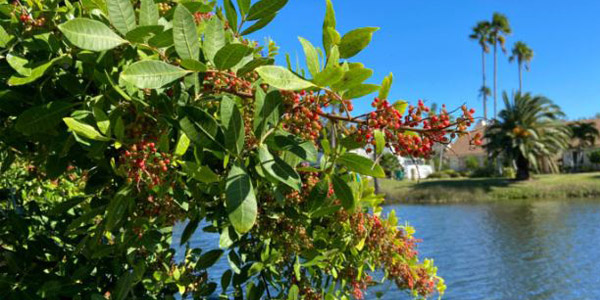
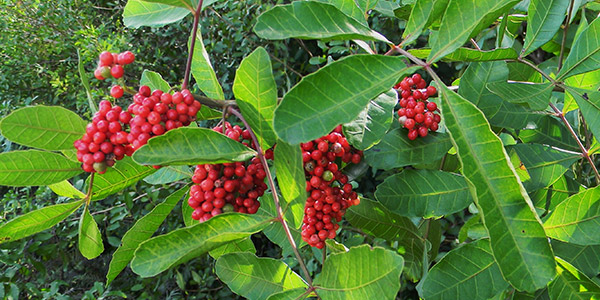
Old World Climbing Fern
The Old World Climbing Fern is light green in color and is a wiry, twining vine that produces small, wavy leaflets with serrated edges. This invasive vine creates thousands of spores that the wind can carry for many miles. This plant can creep up to 90 feet high. It prefers remote areas with moist soil like those that are found in Bald Cypress stands, wet forests, saw grass marshes and in the Everglades. It is estimated that 300,000 acres of natural habitat has been taken over by this fern. This plant's thick and continuous canopy becomes a "fire ladder" during wildfires. A fire ladder is a type of vegetation that allows fires to spread further and more quickly from the ground to the trees. The plant engulfs everything in its path, destroying forests and making wildlife homeless.
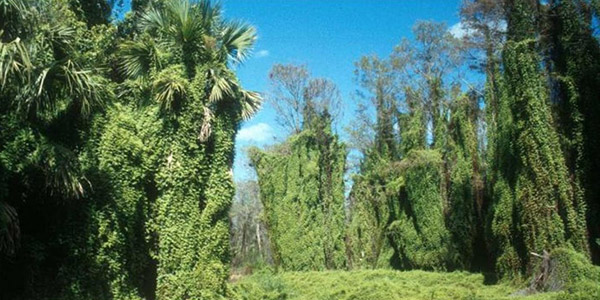

Melaleuca Tree
The Melaleuca Tree is native to Australia. It was first imported and planted in Florida during the late 1800's as a windbreaking shade tree. Later in the 1930's, Melaleuca seeds were spread over the Everglades by airplane, leading to today's significant infestations. This evergreen clumping tree with long narrow leaves quickly grows into dense stands, rapidly crowding out our native species. Its papery grey bark often peels off the tree trunk. The Melaleuca tree produces small, pinkish-white bottlebrush-like flowers and fruit that are filled with 200-300 seeds each. It prefers water but can also flourish in dry areas. Mature height can range from 60 to 100 feet tall. This invasive plant is typically more of a problem for South Florida since it does not like cold temperatures. The trees are highly flammable, which results in a quicker wildfire spread throughout infested regions.
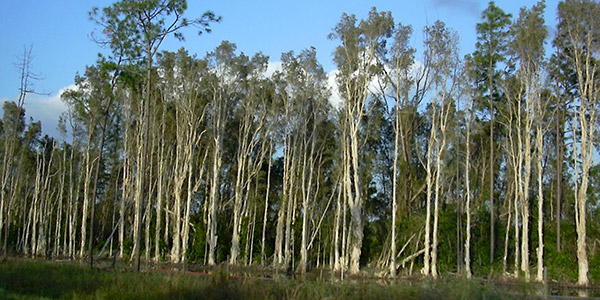
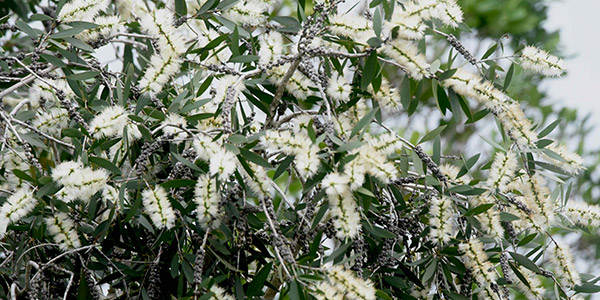
Camphor Tree
The Camphor Tree is a tall evergreen tree that has dark green leaves that are glossy on top. Mature height can range between 60-70 feet tall. Camphor Trees prefer disturbed areas, roadsides, hardwood hammocks and areas with wet soil near lakes. It was first brought to Florida in 1875 as an ornamental tree. The tree has a fragrant oil you can smell when you crush the leaves, and produces aromatic yellow-white flowers that produce dark blue berries full of seeds. One Camphor Tree can produce as many as 100,000 seeds. The tree's berries are a favorite snack for birds that aid in the tree's spread throughout the state.

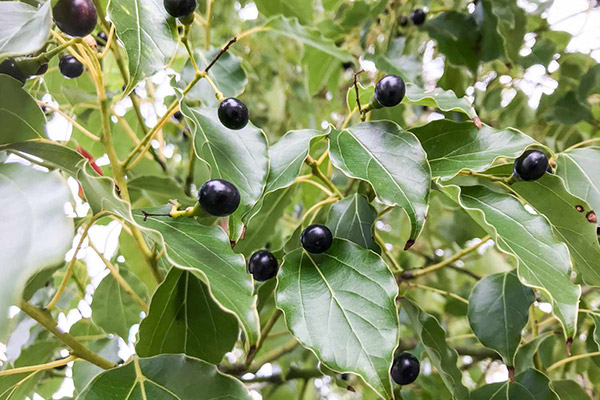
Air Potato
The Air Potato is native to Asia and arrived in Florida in the early 1900's. This is a vining plant with heart shaped green leaves. It drops "Bulbils" that resemble tiny potatoes that develop into new plants. This vine can climb at least 100 feet high up into trees. It prefers sunny areas near trees and thrives in poor soil. A typical air potato plant can grow up to 5 inches in one day and up to 70 feet in one growing season. It quickly forms a think canopy over other vegetation resulting in the native plants perishing due to lack of sunlight. The Air Potato officially became a noxious weed in Florida in 1999. To this day, it is still one of the most invasive plants in the state.
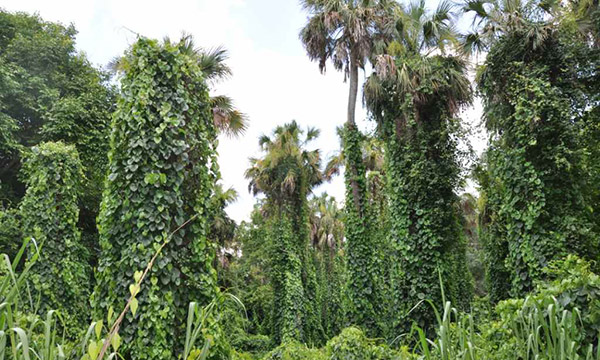
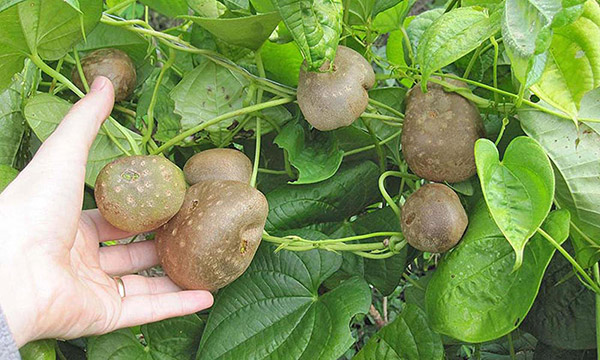
Australian Pine
The Australian pine is native to Australia. In the late 1800s, Floridians imported and planted this tree for lumber, to stabilize beaches, and as a windbreak near canals and the coastline. This tropical evergreen tree has needle-like branches that create little brown flowers year-round. It also produces seed-bearing fruit called nutlets inside cone-shaped clusters. These winged nutlets easily fall off the tree and spread through coastal winds. The trees can reach up to a height of 150 feet. The Australian Pine's preferred habitat is coastal areas with sandy soil. These trees are fast growing and thrive in the salt air. The trees quickly overcome beaches while pushing out native plants. When things get windy instead of stabilizing the beach, they blow over - which ultimately leads to the damage of sea turtle and gopher tortoise nests.
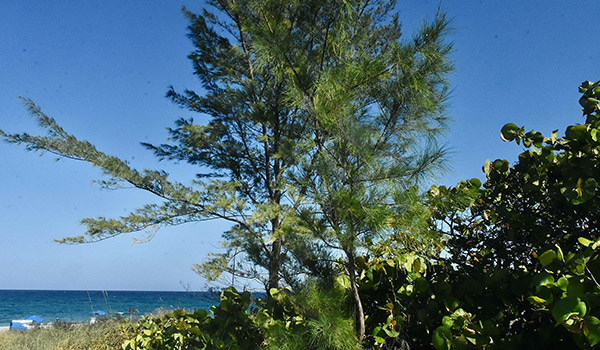
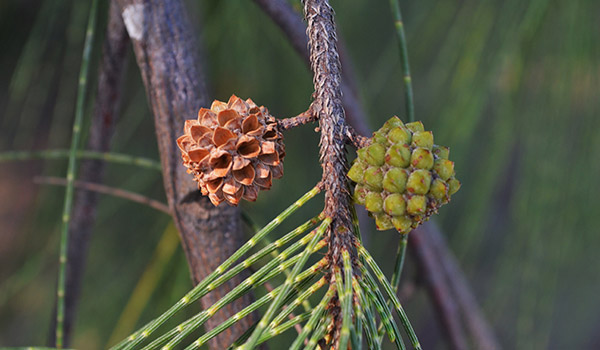
Skunk Vine
Skunk vine is native to Asia and was introduced as an ornamental to Florida in the late 1800's. It is a twining vine with a woody rootstock. Skunk Vine produces many seeds and has a resilient root system. You will find this vine mostly invading forests and living high up in the canopy of trees. This vine can grow up to 30 feet in height. It prefers forests, sandhills, marshes and floodplains. When crushed, the vine produces a skunky smell.
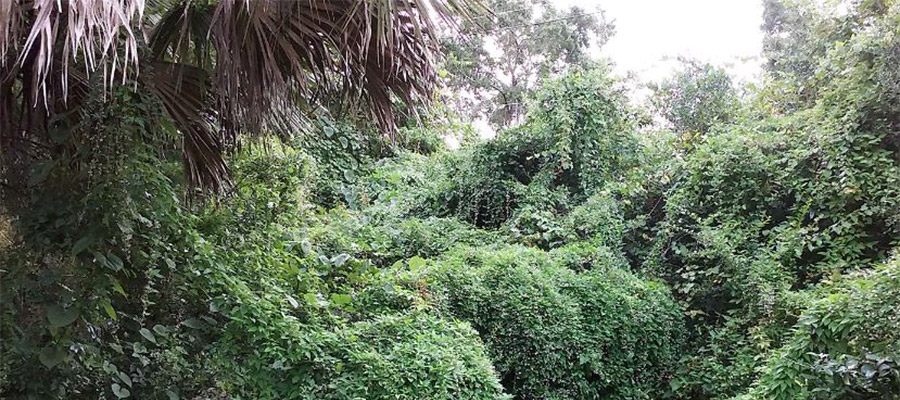
Cogon Grass
This sharp, hairy grass is not only a problem in Florida, but it is considered one of the worst weeds in the world. It was originally used as a grass for soil stabilization in the 1930's and '40s. Cogon Grass was also planted for cattle to graze on, but they didn't much care for it; now it invades our fields and roadsides. This perennial plant has tall yellow green leaf blades and can reach 5-7 feet in height. It thrives in disturbed areas and along roadsides. Cogon Grass is drought tolerant and is readily adaptable to poor soil conditions. This invasive grass is also a burden for firefighters because the blades of the grass produce flammable oils.

Conclusion
Invasive plant management in Florida cost the state millions of dollars in labor, herbicides, lost crops, wildlife displacement, replenishment of native species and more. We must diligently continue to maintain our natural ecosystem throughout the state all while reducing the growth and spreading of invasive plant species.
